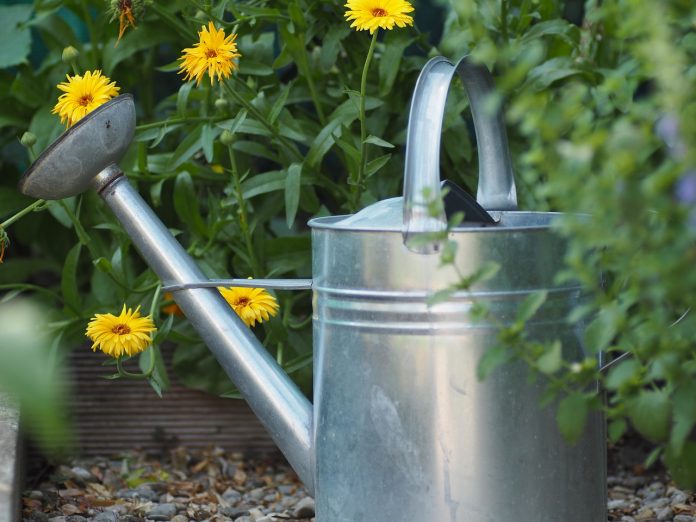Winter is a great time to start thinking about this year’s garden. It may seem odd with snow piled everywhere, but preparing for your spring garden now will give you plenty of time to plan ahead and improve on last year’s results.
Evaluating your garden
Think back to last year’s garden and evaluate the successes, challenges and disappointments of the past growing season. This process will help you analyze needed changes and ensure things run smoothly this spring.
Consider the following questions, taking down notes about your observations and preferences as you go.
Things I liked:
- What did you like about your garden?
- Did certain varieties of vegetables or flowers do particularly well?
- Which varieties were preferred by family members, friends, neighbors and coworkers?
Things that disappointed me:
- What was the biggest downfall of last year’s garden?
- Which vegetables failed and why? Insects? Disease? Location?
- Which flowers failed and why?
Things that challenged me last year:
- What were the biggest challenges — cost, time, watering, space, weather, pests, sunlight hours, soil health?
- What task was too time-consuming?
- What expenses stretched me thin?
- Did some flowers require more watering?
- Did certain vegetable varieties take up too much space?
Things I may need to consider to improve my spring garden:
- Which plants need to be divided?
- Which plants should be moved to a better spot?
- Have some shrubs or trees grown too close together?
- Is my garden too time-consuming and costly to maintain?
- Have you done a soil test recently?
Planning ahead
This year you want to capitalize on last year’s successes, eliminate the disappointments and reduce the challenges for a better gardening season. Plan to make changes based on how you answered the questions above, considering individual aspects of your gardening regimen.
- Soil. The soil is where you want to begin your preparations. If it’s been more than a couple of years since you’ve done a soil test, plan to test your soil this spring to reveal any shortcomings. Based on the results of your soil test, you’ll know what to do next. For example, if the acidity in your soil is low, you need to add lime.
- Vegetable garden. This spring, you want to try to plant vegetables with qualities that can counteract last year’s drawbacks. Choose varieties with flavor, disease resistance and performance based on the results of your evaluation. Secondly, determine where problems with insects, diseases and weeds occurred, avoid those locations and rotate your spring crops. Crop rotation will alleviate many potential problems.
- Flowerbeds. To be successful in your flowerbed, the growing requirements of your plants need to match the growing conditions you’re offering. If you found one specific type of plant had a problem last year, the growing requirements of that particular plants aren’t being met. If most of the plants in your flowerbed were affected, the right growing conditions were not being offered. Growing conditions include soil, sunlight hours, water availability and weather. For example, both flowers and vegetables often fail when they don’t have enough sun. You can correct the problem by choosing shade-tolerant varieties for areas of your garden that don’t receive a lot of sunlight. Providing ideal growing conditions is key, but can be difficult with different plants having varied requirements. You can make things simpler by planting flowers with similar needs together.
- Shrubs and trees. Keeping trees and shrubs pruned is important for many reasons. Not only is it good for the plant’s development, but it helps to let light in for the plants growing around and under it. With shrubs, it’s a good idea to remove a third of the older branches each year. With trees, you want to consider thinning out branches to let more light through or replace plants underneath with shade-tolerant varieties as the tree grows and sunlight becomes more limited.
- Weak plants. Weak plants are more susceptible to pests and diseases. By moving struggling plants to a location better suited to their needs with increased spacing from other plants, you’re taking a big step toward improving the sick plants’ health and stopping the spread of pests and diseases to other plants. You also want to avoid planting varieties that suffered from pests or diseases the year before in the same locations as last year. By ensuring optimum growing conditions, good spacing and crop rotation you’re reducing your chances of having the same issues as last year.
- Time and money. If you have less time or money to commit to gardening, you may also need to adjust your routine this spring. You can dial things back by choosing low-maintenance plants like shrubs, spring bulbs and native plants. You can emphasize foliage and cut down on blooms that need deadheading. You may also consider container gardening or raised beds over a large vegetable garden or flowerbed.
By completing an honest evaluation of last year’s gardening efforts, you can ensure a successful growing season this spring.










